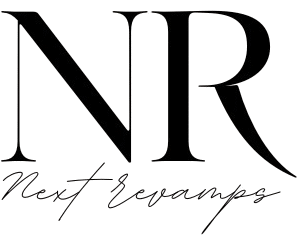Introduction: What is giniä?
In an era saturated with information, the quest for uniqueness has never been more intense. Enter giniä—a term you may have encountered in the digital ether, on a boutique storefront, or as a brand for artisanal goods. At first glance, it’s enigmatic. Is it a name, a concept, or a new word entirely? The power of giniä lies precisely in this ambiguity. It is a modern neologism, a crafted piece of linguistic creativity designed to capture attention and evoke a sense of novelty and sophistication. This article delves beyond the surface to explore the origins, interpretations, and compelling cultural resonance of the giniä phenomenon, a prime example of how language evolves to meet the demands of contemporary branding and identity.
Origins & Linguistic Insights
The word giniä does not have a fixed entry in traditional dictionaries, which is central to its appeal. It is a constructed term, a product of deliberate linguistic innovation rather than organic, historical evolution.
-
Phonetics and Orthography: The most striking feature of giniä is the umlaut over the ‘a’ (ä). In phonetics, an umlaut signifies a shift in vowel sound. In languages like German or Swedish, ‘ä’ typically represents a sound similar to the ‘a’ in “cat” or “air.” This diacritical mark immediately sets the word apart, giving it a European, almost Scandinavian flair, which is often associated with quality, design, and minimalism. The presence of a word with umlaut in an English-dominant context automatically signals premium-ness and exclusivity.
-
Morphological Construction: Linguistically, we can break down giniä. The root “gin” could be perceived as familiar, echoing words like “begin” or the spirit “gin,” lending a slight anchor of recognition. The suffix “-iä” is open-ended and melodic, contributing to an abstract and brandable quality. This construction follows a trend in modern neologisms where sounds are chosen for their aesthetic and emotional impact rather than literal meaning. As noted by sources like Oxford Languages, which tracks the emergence of new words, the creation of such terms is a key part of how a living language grows and adapts.
The meaning of giniä, therefore, is not found in a dictionary but is built through its use and the associations it cultivates.
Interpretations of giniä in Modern Culture
The ambiguity of giniä allows it to be a vessel for multiple interpretations, making it a potent cultural symbol.
-
A Brand of Individuality: In consumer culture, giniä is often adopted by brands that wish to position themselves as unique, artisanal, and away from the mainstream. It suggests a product or service that is not mass-produced but carefully curated.
-
A Philosophical Concept: The sound and structure of the word can evoke concepts of genesis, beginning, or an inner essence (“gini-” as in genesis, “-ä” as a unique entity). It can be interpreted as a personal mantra for authenticity and self-creation.
-
An Aesthetic Experience: For many, giniä represents a particular aesthetic—clean, modern, slightly mystical, and intentionally designed. It’s a word that fits perfectly on the packaging of a niche perfume, the homepage of a creative agency, or the label of a sustainable clothing line.
This multiplicity is its strength. The giniä concept is fluid, allowing individuals and brands to project their own narratives onto it.
Why giniä is Popular in Branding & Digital Spaces
The adoption of names like giniä is a strategic move in a crowded marketplace. Here’s why it works:
-
Uniqueness and Memorability: In a sea of common names, a unique term like giniä stands out. It is easy to trademark and virtually guarantees a unique digital footprint, including available social media handles and domain names. This aligns with the broader unique names trend in startup and branding culture.
-
Semantic Blank Slate: Unlike words with pre-existing connotations (e.g., “Amazon,” “Apple”), giniä has no baggage. Brands can define its meaning entirely from scratch, building a specific brand universe without fighting preconceived notions. This is a masterclass in cultural branding, where a symbol’s meaning is constructed through consistent storytelling.
-
SEO and Discoverability: From an SEO perspective, a unique brand name is a low-competition keyword. A user searching for “giniä” is almost certainly looking for that specific brand, leading to high-intent traffic and clean analytics data.
-
Cultural Capital: Using a stylized word with a diacritical mark implies a global, sophisticated, and design-literate sensibility. It acts as a shibboleth, identifying a brand and its customers as being “in the know.”
As the Harvard Business Review has explored in articles on brand positioning, creating a distinct identity is the first step toward building lasting customer loyalty, and a unique name is a foundational element of that identity.
Emotional & Symbolic Dimensions of giniä
The power of giniä extends beyond practicality into the realm of emotion and symbolism.
-
The Allure of the Unknown: The slight mystery of the word invites curiosity and engagement. Consumers often enjoy the process of “discovering” what a brand stands for, and an unusual name facilitates this journey.
-
Aspirational Quality: The European inflection of the umlaut can evoke aspirations toward a certain lifestyle—one that is curated, elegant, and conscious. It symbolizes a break from the ordinary.
-
Modernity and Innovation: By its very nature as a neologism, giniä symbolizes newness, forward-thinking, and innovation. It suggests that the brand is not following trends but is instead a trendsetter.
Practical Applications of giniä
Where might one encounter the giniä brand concept in the wild?
-
Luxury Goods: Perfumeries, watches, or jewelry brands seeking a name that sounds both classic and contemporary.
-
Beauty and Wellness: Skincare lines promoting pure, unique ingredients and a holistic philosophy.
-
Tech Startups: SaaS companies or apps that want to project an image of sleek, human-centered design and intelligence.
-
Creative Industries: Design studios, marketing agencies, and freelance professionals using it as a personal brand to signify their creative approach.
-
Food and Beverage: Craft distilleries (playing on the “gin” root) or artisanal food producers.
Challenges & Criticism
The giniä approach is not without its potential pitfalls.
-
Pronunciation Uncertainty: The biggest hurdle is how to say the word. Is it “jin-ee-ay,” “gin-ee-uh,” or “yee-nee-ah”? This can create a barrier to word-of-mouth marketing.
-
Perception of Pretentiousness: Some audiences may view the use of a diacritical mark and an invented word as trying too hard, or as being insubstantial style over substance.
-
The Burden of Meaning-Building: Because the word has no inherent meaning, the brand must invest significant resources in telling its story and defining the term for its audience. Without a strong narrative, giniä risks remaining an empty vessel.
You can also read our recent articles
Future of giniä: Trend or Timeless?
Is giniä a fleeting trend or does it have staying power? The specific term may wax and wane in popularity, but the strategy it represents is timeless. The desire to create unique, ownable, and meaningful brand symbols is a constant in commerce and culture. The use of linguistic creativity and neologisms will continue to be a vital tool for differentiation. While giniä itself might become dated, the principles of its success—uniqueness, symbolic depth, and a blank semantic slate—will remain relevant for any new entity seeking to make its mark on the world.
FAQs About giniä
Q1: How do you pronounce giniä?
A: There is no single “correct” pronunciation, which is both a challenge and a feature. Common interpretations include “jin-ee-ay” (emphasizing the umlaut) or “gin-ee-uh.” The brand that uses the name would typically set the preferred pronunciation.
Q2: Is giniä a real word?
A: It is a “real” word in the sense that it is used in contemporary contexts, but it is a modern neologism, meaning it was recently invented rather than evolving from historical language roots. Its meaning is defined by its usage.
Q3: What does the umlaut in giniä do?
A: The umlaut (ä) primarily serves a stylistic and branding purpose. It differentiates the word, gives it a distinct visual identity, and often implies a European sophistication or a specific phonetic pronunciation.
Q4: Can I use the name giniä for my business?
A: You must first conduct a thorough trademark search to ensure it is not already trademarked in your industry or region. Its uniqueness makes it attractive, but legal clearance is essential.
Conclusion
Giniä is far more than a collection of letters; it is a case study in modern identity creation. It demonstrates how linguistic creativity, fused with strategic cultural branding, can produce a powerful symbol for our times. It thrives on its ambiguity, its aesthetic appeal, and its capacity to be redefined. Whether as a brand name, a conceptual ideal, or a marker of a specific aesthetic, giniä encapsulates the endless human drive to name, to define, and to stand out. In the evolving lexicon of our global culture, it represents the beautiful potential of a word yet to be fully written.








One thought on “Giniä: Deconstructing the Modern Neologism and Its Cultural Power”